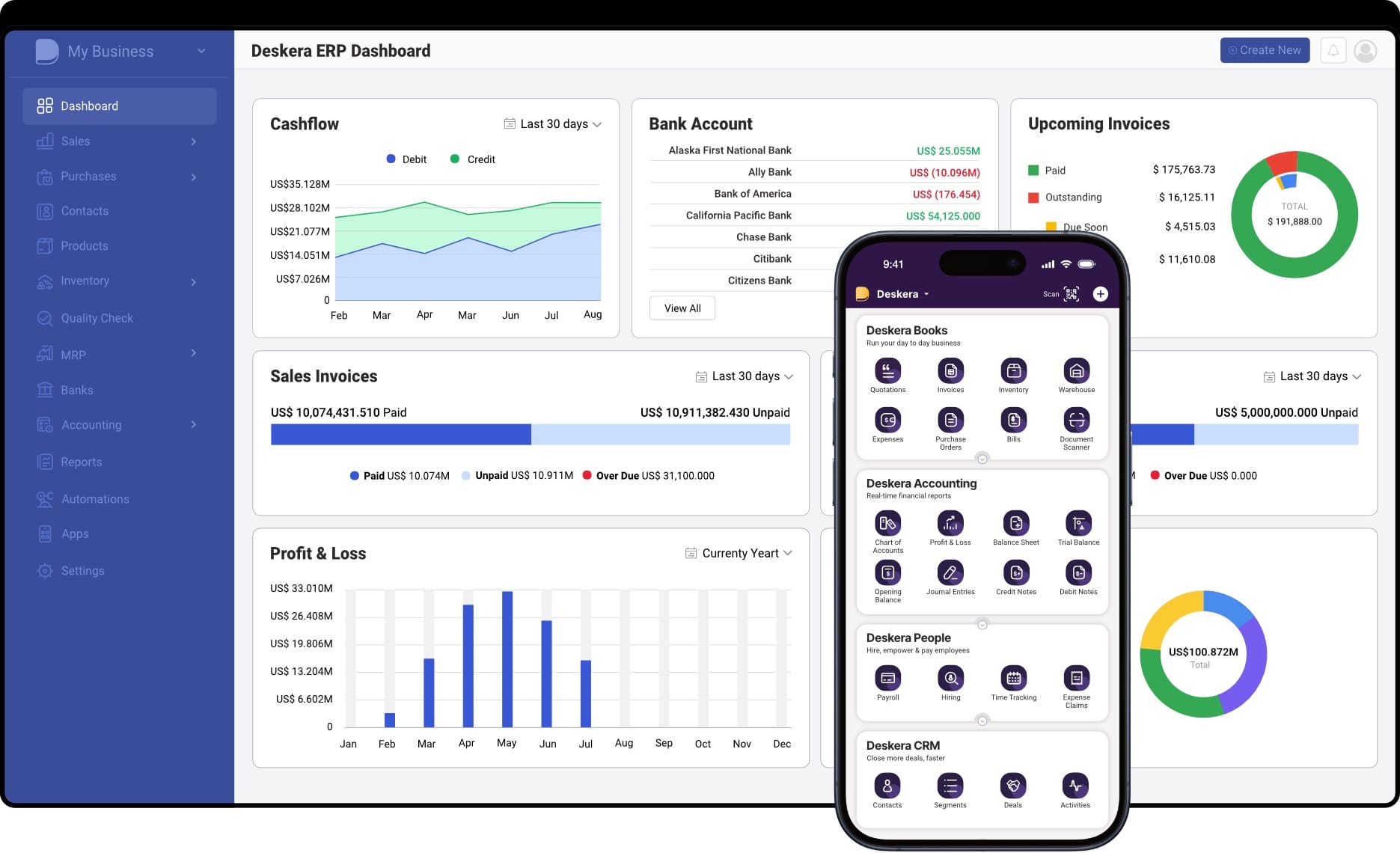Have you ever wondered why the value of land or your stock investments seems to rise over time, while machines and equipment typically lose value? The answer lies in the concept of appreciation in accounting. While depreciation accounts for the loss of value in assets, appreciation is the opposite—it refers to the increase in the value of certain assets over time due to factors like market demand, scarcity, or economic trends.
In accounting, appreciation plays a vital role in presenting a more accurate picture of an organization’s financial health. Although not always recorded in traditional accounting methods, understanding which assets appreciate—and how to manage them—can have significant implications for investment strategies, financial planning, and long-term business success. It’s especially relevant in industries that hold non-depreciable assets like land or long-term investments.
Appreciating assets, such as real estate or equity investments, can help businesses build wealth passively. However, unlike depreciation, appreciation isn’t always recognized directly in the income statement unless a fair value model is used under specific accounting standards. That’s why knowing when and how appreciation is considered in financial reporting is essential for business owners, accountants, and investors alike.
To effectively manage appreciating and depreciating assets, modern businesses are turning to ERP solutions like Deskera ERP. Deskera offers integrated accounting, inventory, and asset management tools that help you track asset value changes, monitor financial health in real time, and make smarter investment decisions. With built-in automation and powerful reporting, Deskera simplifies complex accounting tasks—making asset appreciation easier to understand and manage.
What is Appreciation in Accounting?
In accounting, appreciation refers to the increase in the value of an asset over time, without any direct action or enhancement made by its owner. This increase typically results from external factors such as market demand, economic trends, inflation, scarcity, or location advantages. Unlike revenue generated through business activities, appreciation is a passive gain—a rise in an asset’s worth that simply occurs as market conditions evolve.
Common appreciating assets include land, real estate, stocks, bonds, and certain intangible assets like patents and trademarks. For instance, land in a growing urban area may appreciate as infrastructure and surrounding developments increase its desirability. Similarly, a patent might gain value if the technology it protects becomes widely adopted. Appreciation is different from depreciation, where an asset loses value due to usage, aging, or obsolescence—such as in the case of vehicles or machinery.
From an accounting perspective, appreciation is not always recorded on financial statements—especially under U.S. Generally Accepted Accounting Principles (GAAP), which require assets to be listed at their historical cost. This means that even if an asset like real estate doubles in market value, its book value remains unchanged unless it is sold and the gain is realized. In contrast, International Financial Reporting Standards (IFRS) may allow certain assets to be revalued periodically, offering a more dynamic approach to reflecting appreciation.
Understanding appreciation is critical for financial planning, tax strategy, and asset management. It allows businesses and investors to recognize potential value increases and make informed decisions about when to hold or sell an asset. Tools like Deskera ERP make managing appreciating and depreciating assets easier by offering real-time visibility, automation, and integrated accounting features. Deskera helps businesses maintain compliance, track asset performance, and plan strategically for long-term gains.
Types of Assets with High Chances of Appreciation
Not all assets appreciate in value, but certain categories have a higher likelihood of gaining worth over time due to market behavior, economic trends, and intrinsic qualities.
Here are the key asset types that commonly experience appreciation:
1. Real Estate and Land
Land is one of the most well-known appreciating assets. Since it is a finite resource, increased demand due to urban development, infrastructure improvements, or demographic shifts often leads to a rise in land and property values. Unlike buildings or equipment, land does not depreciate and can yield significant returns over time.
2. Marketable Securities (Stocks and Bonds)
Stocks, mutual funds, and certain bonds can appreciate based on company performance, economic growth, or investor sentiment. Long-term equity investments in well-performing companies typically offer capital gains as their market prices increase.
3. Precious Metals and Commodities
Assets like gold, silver, and other precious metals tend to appreciate, especially during periods of economic uncertainty or inflation. These are often used as hedges against currency depreciation and volatile markets.
4. Intellectual Property and Intangible Assets
Intellectual property such as patents, trademarks, and copyrights can appreciate if the associated technology, brand, or content becomes more valuable over time. For example, a trademarked brand gaining global recognition can significantly boost a company’s valuation.
5. Collectibles and Fine Art
Items like rare artwork, antiques, vintage cars, and limited-edition collectibles often appreciate, especially if they are well-preserved and gain cultural or historical significance. However, these are less liquid and more speculative than traditional investment assets.
6. Foreign Currencies
Certain currencies may appreciate against others in the foreign exchange market due to favorable economic indicators, interest rate changes, or geopolitical stability. Currency appreciation is a key concept in international trade and investing.
Understanding which assets are likely to appreciate helps businesses and investors make more informed financial decisions. While appreciation is never guaranteed, recognizing asset classes with strong appreciation potential can be a powerful part of a long-term wealth-building strategy.
Appreciation vs. Capital Gain
- Appreciation is the potential increase in value over time.
- Capital gain is the actual profit made when that appreciated asset is sold.
In summary, appreciation leads to capital gain when the asset is eventually sold. Appreciation affects your strategic planning and asset valuation, while capital gain impacts your taxable income and financial reporting.
Appreciation vs. Depreciation
- Appreciation adds value and is often seen in non-depreciable assets like land or investments.
- Depreciation reduces value and applies to tangible, depreciable assets used in business operations.
Both are essential in accounting for asset valuation, tax planning, and understanding the true economic worth of business resources.
What is Capital Appreciation?
Capital appreciation refers to the increase in the value of a capital asset over time, resulting in a higher market price than its original purchase cost. It represents the gain an investor realizes when an asset—such as real estate, stocks, bonds, or other investments—rises in market value.
Unlike income generated from the asset, such as dividends or rent, capital appreciation is an unrealized gain until the asset is sold. Once sold, this increase in value may translate into a capital gain, which can have tax implications depending on the holding period and applicable tax laws.
Capital appreciation is a key goal for investors seeking long-term growth, as it reflects the asset’s potential to generate wealth through price increases rather than ongoing income.
What is Currency Appreciation?
Currency appreciation occurs when the value of one country’s currency increases relative to another currency in the foreign exchange (forex) market. This means that the appreciating currency can buy more units of a foreign currency than before.
For example, if the U.S. dollar appreciates against the euro, one dollar will exchange for more euros than it did previously. Currency appreciation can impact international trade, travel costs, and investment returns.
Several factors influence currency appreciation, including strong economic growth, higher interest rates, favorable trade balances, and investor confidence in a country’s financial stability.
Formula for Appreciation
The basic formula to calculate appreciation in value is:
Appreciation = Current Value - Original Value
Appreciation Rate Formula
If you want to calculate the percentage increase in value (i.e., appreciation rate), use this formula:
Appreciation Rate (%) = [(Current Value - Original Value) / Original Value] × 100
Example:
- Original Value = $100,000
- Current Value = $130,000
Appreciation = 130,000 - 100,000 = $30,000
Appreciation Rate = (30,000 / 100,000) × 100 = 30%
So, the asset appreciated by $30,000 or 30%.
Factors Influencing Appreciation
Several market and economic conditions can drive the appreciation of an asset. Understanding these factors is key to making informed financial and investment decisions:
Increased Demand
When more people want a specific asset—such as real estate in a prime location or shares of a booming tech company—their value tends to rise. Demand often grows due to economic growth, consumer trends, or investor confidence.
Decreased Supply
Scarcity boosts value. If an asset becomes rare or limited in availability—like a finite parcel of land or a discontinued collectible—it typically appreciates due to competitive buying.
Inflation
As the general price level in an economy rises, the nominal value of assets often increases as well. For example, a property purchased for $200,000 may be worth $250,000 a few years later simply because of inflationary trends.
Interest Rate Changes
Lower interest rates reduce borrowing costs and can boost investment in assets like real estate and stocks, driving their prices upward. Conversely, rising interest rates can reduce asset demand and slow appreciation.
Economic Growth
A growing economy can enhance business profitability and consumer confidence, increasing the market value of assets like company shares, commercial property, or intellectual property.
Regulatory and Legal Changes
New laws or favorable policies—such as tax incentives or relaxed zoning restrictions—can positively impact asset values, especially in sectors like real estate or energy.
Technological Advancements
Innovations can increase the value of intellectual property, such as patents or software, especially if the underlying technology becomes widely adopted in the market.
Benefits of Appreciation in Accounting
Understanding and recognizing appreciation in accounting can bring several strategic advantages for businesses, CFOs, and financial leaders:
Improved Profitability
When a company sells an appreciated asset, the realized gain boosts profitability and cash flow, strengthening overall financial performance. Appreciated assets also enhance the company’s financial profile, which can improve borrowing capacity and lead to better lending terms.
Potential Tax Advantages
Although unrealized appreciation isn’t taxable, businesses can strategically time asset sales to optimize their tax position. By holding onto appreciating assets, companies can defer capital gains taxes, choosing to realize gains during years when they have offsetting tax losses or lower tax rates, thus managing tax liabilities more effectively.
Enhanced Financial Visibility and Decision-Making
Regularly monitoring asset appreciation provides management with valuable insights into untapped asset value. This knowledge empowers leaders to make informed decisions about resource allocation, such as whether to hold, sell, or reinvest in other opportunities, ultimately driving better financial outcomes.
Improved Financial Reporting
Including appreciation-related information helps present a more accurate and comprehensive view of a company’s financial health. While U.S. GAAP limits recognizing appreciation on financial statements until realized, awareness of asset value changes is crucial for investors, creditors, and other stakeholders assessing the company’s true worth.
Increased Collateral Value
Appreciated assets can serve as stronger collateral for securing loans or credit lines. Lenders often consider the current market value of assets rather than just the book value, allowing companies with appreciating assets to access more favorable financing options.
Competitive Advantage
Assets that appreciate—such as intellectual property, real estate, or specialized equipment—can provide a competitive edge by increasing a company’s market value and attractiveness to investors and partners.
Wealth Preservation and Growth
Appreciation helps businesses and investors preserve and grow their wealth over time, especially during inflationary periods when holding appreciating assets can protect purchasing power.
Facilitates Strategic Mergers and Acquisitions
Recognizing appreciation in valuable assets can enhance a company’s valuation during negotiations for mergers or acquisitions, potentially leading to better deal terms.
How Businesses Track and Measure Asset Appreciation
While appreciation refers to the increase in an asset’s market value over time, accounting standards such as GAAP do not typically allow unrealized appreciation to be recorded on financial statements (except in certain cases like investment securities). However, businesses can still track and manage appreciation effectively for strategic planning, reporting insights, and decision-making.
Below are the common methods used to account for and monitor asset appreciation:
1. Professional Appraisals
Engage certified appraisers to assess the current market value of significant assets periodically—especially important for real estate, art, antiques, or collectibles.
2. Market Analysis
Regularly review market trends and comparable sales data for similar assets in the same region or sector. This is useful for publicly traded assets like stocks, bonds, or precious metals.
3. Income Approach
Estimate an asset’s present value by forecasting its future cash flows. Commonly used for income-generating assets such as rental properties or intellectual property (e.g., expected royalties).
4. Cost Approach
Determine the replacement cost of the asset, then subtract depreciation due to age, wear, or obsolescence. Ideal for specialized equipment or custom-built assets where market comparables don’t exist.
5. Automated Valuation Models (AVMs)
Use software-based algorithms and public data to estimate asset values—especially for personal and commercial real estate—when frequent manual appraisals aren’t feasible.
6. Insurance Valuations
Use insured values as a proxy for current market worth. Insurers often require periodic revaluation of valuable assets such as machinery, facilities, or collections.
7. Tax Assessments
Review property tax assessments for land or commercial property. While these may not reflect real-time market value, they provide a baseline for tracking changes over time.
8. Internal Expertise
Rely on internal teams familiar with the asset, especially when dealing with assets like internally developed brands, software, or proprietary tools that may not have an initial market price.
Best Practices for Managing Appreciation in Accounting
Effectively managing asset appreciation requires a comprehensive approach that blends accounting standards with strategic business planning. While appreciation is not always captured in traditional financial statements, recognizing and tracking it can provide a competitive advantage, support smarter investment decisions, and enhance transparency.
Below are the key best practices to manage appreciation responsibly and proactively:
1. Maintain Accurate Historical Cost Records
Start by meticulously documenting the original cost of each asset. This includes not only the purchase price but also any additional expenditures required to bring the asset into operational condition—such as delivery fees, setup charges, legal fees, installation, and testing.
Maintaining this historical cost is crucial, as it forms the foundation for calculating unrealized gains and ensures consistency with Generally Accepted Accounting Principles (GAAP), which emphasize historical cost accounting for most asset classes.
Why it matters: Without a reliable baseline, it's impossible to assess how much value an asset has gained over time or to accurately measure return on investment (ROI).
2. Understand How Different Asset Types Appreciate
Appreciation patterns differ widely based on the asset class:
- Real estate typically appreciates steadily due to market demand, location, and economic conditions.
- Financial instruments such as stocks or bonds may fluctuate daily based on market volatility and investor sentiment.
- Intellectual property or technology assets can appreciate dramatically if they gain market adoption or become foundational to innovation.
Understanding these dynamics allows finance teams to allocate resources more effectively and set realistic appreciation expectations based on historical trends, risk, and asset utility.
Tip: Segment assets by type and apply tailored evaluation models accordingly (e.g., income approach for IP, market comps for real estate).
3. Conduct Regular Asset Valuations
Even though appreciation is not typically recorded on the balance sheet under GAAP, regular asset revaluation helps businesses understand true market worth. Here’s how you can conduct effective valuations:
- Professional Appraisals: Use third-party experts for high-value assets like real estate or artwork.
- Market Comparables: Monitor the market value of similar assets sold under similar conditions.
- Automated Valuation Models (AVMs): Utilize software-based tools for real-time estimates (especially for property).
- Income and Cost Approaches: Estimate value based on expected cash flows or replacement costs, respectively.
Why it matters: Knowing the real-time value of appreciating assets supports better decisions about refinancing, insurance coverage, capital allocation, or potential sales.
4. Plan for Tax Implications of Appreciation
Appreciation can trigger tax events when assets are sold. While unrealized appreciation isn't taxable, realized gains are—typically as capital gains. Strategic tax planning involves:
- Timing sales in low-income years or when capital losses can offset gains.
- Leveraging Section 1031 exchanges (in the U.S.) to defer taxes on real estate.
- Understanding long-term vs. short-term capital gains tax rates.
Key Insight: By delaying asset sales or using tax-loss harvesting, companies can retain more value from appreciated assets and align tax liabilities with broader financial goals.
5. Ensure Compliance with Accounting Standards
While GAAP requires assets to be recorded at historical cost, certain industries or asset types may require alternative approaches:
- Financial institutions often use fair value accounting for financial instruments.
- IFRS (International Financial Reporting Standards) allows revaluation models for certain non-current assets like property, plant, and equipment.
Understanding these standards ensures that financial statements are accurate, compliant, and informative to investors, auditors, and regulators.
Best Practice: Consult with your accounting advisors to determine which framework applies to your assets and update your reporting processes accordingly.
6. Disclose Appreciation Transparently
Although appreciation might not appear directly in the balance sheet, companies should consider making voluntary disclosures in:
- Notes to the financial statements
- Management discussion and analysis (MD&A)
- Internal reports for executive decision-making
These disclosures provide stakeholders—investors, creditors, and analysts—with a fuller picture of the company’s unrealized value and future earning potential.
Why it's beneficial: Transparent disclosure builds credibility, improves investor confidence, and aligns with GAAP’s full disclosure principle.
By implementing these best practices, businesses can better understand and manage the increasing value of their assets—even when those gains aren’t immediately reflected in financial reports. A well-informed appreciation strategy can lead to stronger balance sheets, better tax outcomes, improved financial forecasting, and greater stakeholder confidence.
Appreciation in Accounting: Key Challenges and Considerations
While asset appreciation can signal growth and financial strength, accounting for it presents several challenges. Since appreciation is typically not recorded under GAAP, businesses must walk a fine line between recognizing economic reality and adhering to accounting regulations.
Below are the key challenges and strategic considerations when dealing with appreciation in accounting:
1. Non-Recognition Under GAAP
One of the primary challenges is that appreciation is not recognized in financial statements under U.S. GAAP. Assets are generally recorded at historical cost and are not revalued upwards, even if their market value increases significantly.
Consideration: While appreciation might reflect the true economic value of an asset, GAAP emphasizes reliability over relevance. Businesses must find ways to track appreciation internally without distorting official financial statements.
2. Measurement Complexity
Valuing appreciated assets is not straightforward. Different valuation approaches (market, income, or cost) may produce varying estimates, and choosing the appropriate method depends on the asset type, data availability, and industry norms.
Challenge: Without objective market prices, especially for unique or intangible assets, estimates can be highly subjective and prone to error or bias.
3. Lack of Standardized Valuation Frequency
There’s no standard guidance on how frequently businesses should assess appreciation. Infrequent valuations may result in missed opportunities or outdated asset strategies, while overly frequent assessments can be costly and burdensome.
Consideration: Companies should develop internal policies based on asset type, volatility, and business goals to determine how often to reassess asset value.
4. Tax Implications on Realized Appreciation
Although appreciation itself isn’t taxable until an asset is sold, realizing those gains can trigger significant tax liabilities. Planning asset sales without understanding the tax consequences can lead to cash flow issues.
Challenge: Businesses must align financial strategies with tax planning to minimize capital gains taxes and take advantage of timing opportunities (e.g., lower tax years, deferrals, or like-kind exchanges).
5. Insurance Coverage Misalignment
If appreciated assets aren’t revalued or reassessed regularly, insurance coverage may be inadequate. In the event of loss or damage, this can result in underinsured claims and financial exposure.
Consideration: Insurance policies should be reviewed periodically to reflect the current market value of high-value assets like property, machinery, and collectibles.
6. Stakeholder Misinterpretation
Since appreciation isn't shown in financial statements, stakeholders like investors or lenders may underestimate the true economic value of the company’s assets.
Challenge: Without proper disclosures or supporting documents, the full financial strength of the business may go unnoticed, affecting investment decisions or credit terms.
7. Disclosure Limitations
Although voluntary, disclosing information about appreciation in financial statement notes or management reports can enhance transparency. However, deciding what, when, and how much to disclose is a balancing act between transparency and strategic confidentiality.
Consideration: Over-disclosure might alert competitors to valuable company holdings, while under-disclosure could harm investor trust.
Accounting for appreciation involves more than tracking rising asset values—it requires careful navigation of accounting rules, valuation methods, disclosure strategies, and tax planning.
By understanding these challenges and considering their broader implications, businesses can harness the benefits of appreciation while remaining compliant, strategic, and transparent.
Harnessing Deskera ERP for Effective Asset Appreciation Management
While traditional accounting standards like GAAP may not permit the direct recording of asset appreciation, Deskera ERP offers a suite of tools that enable businesses to monitor, analyze, and leverage asset value changes strategically.

1. Comprehensive Fixed Asset Management
Deskera's Fixed Asset Accounting module allows businesses to:
- Track and manage fixed asset purchases, depreciation, and disposals.
- Monitor asset utilization to optimize efficiency.
- Record regular maintenance activities and schedule preventative tasks.
- Generate detailed reports providing current and historical data on fixed asset investments.
These features ensure that businesses have a clear view of their assets' lifecycle, aiding in internal assessments of appreciation.
2. Custom Fields for Enhanced Asset Tracking
Deskera ERP allows users to create custom fields within various modules, enabling businesses to:
- Capture additional information such as market valuations or appraisal dates.
- Tailor data entry to meet specific tracking needs.
- Filter and generate reports based on these custom fields for more insightful analysis.
This flexibility ensures that businesses can monitor asset appreciation effectively, even if it's not reflected in official financial statements.
3. Automated Reminders and Maintenance Scheduling
To maintain asset value and ensure timely assessments, Deskera provides:
- Automated reminders for periodic maintenance and insurance renewals.
- Scheduling tools to plan regular asset evaluations.
These features help in preserving asset conditions, indirectly supporting appreciation.
4. Advanced Reporting and Dashboards
Deskera's ERP suite offers powerful reporting tools that allow businesses to:
- Visualize asset data through customizable dashboards.
- Generate reports comparing historical costs with current valuations.
- Analyze trends to make informed decisions regarding asset management.
These insights are crucial for strategic planning and maximizing asset value.
5. Integration with Financial Modules for Strategic Planning
Deskera seamlessly integrates asset data with its broader financial modules, enabling businesses to:
- Assess the impact of asset appreciation on overall financial health.
- Align asset strategies with budgeting and forecasting efforts.
- Optimize tax planning by understanding potential gains from appreciated assets.
This holistic approach ensures that asset appreciation is considered within the broader financial context.
6. Cloud-Based Accessibility and Mobile Support
Deskera's cloud-based platform and mobile applications provide:
- Real-time access to asset information from anywhere.
- Flexibility for teams to update and monitor asset data on the go.
- Enhanced collaboration across departments and locations.
This ensures that asset appreciation tracking is not confined to a single location or device.
Key Takeaways
- Appreciation refers to the increase in the market value of an asset over time, although it’s not directly recorded under GAAP or IFRS in financial statements.
- Assets such as real estate, intellectual property, marketable securities, and collectibles often appreciate in value, making them valuable for long-term investment and financial planning.
- Asset appreciation is driven by various factors like market demand, inflation, scarcity, improvements, innovation, and favorable economic conditions.
- While appreciation isn’t recorded in traditional accounting, businesses can track it using methods like professional appraisals, market analysis, and automated valuation tools to inform strategic decisions.
- Maintain accurate historical cost records, conduct regular valuations, understand asset-specific trends, and disclose appreciation transparently to support informed decision-making and stakeholder trust.
- Managing appreciation comes with challenges, including non-recognition in financial reporting, valuation complexities, and potential tax consequences, requiring careful planning and consistent monitoring.
- Deskera ERP supports effective appreciation tracking through its fixed asset module, custom fields, automated reminders, and advanced reporting, enabling businesses to make data-driven asset management decisions.
Related Articles












